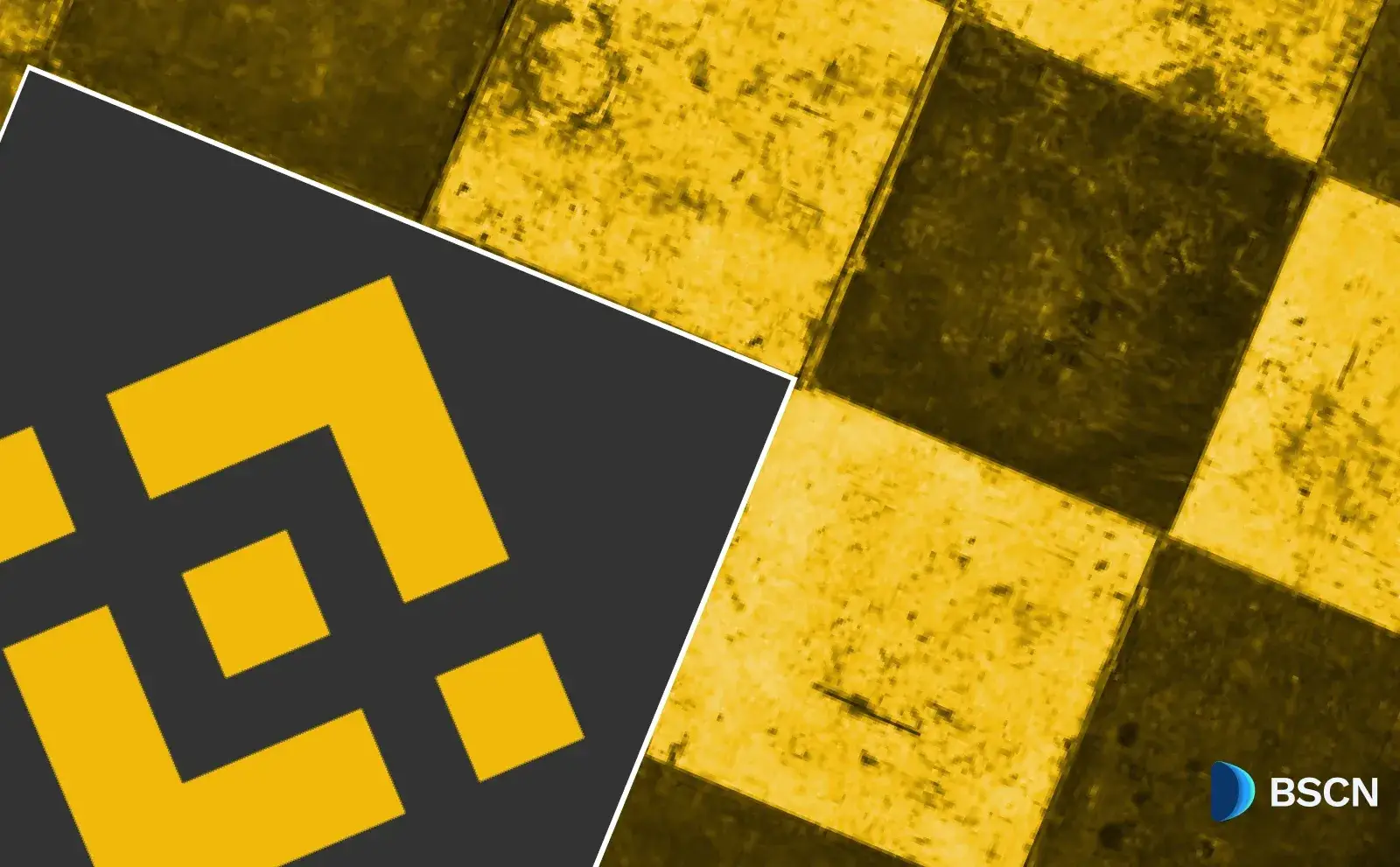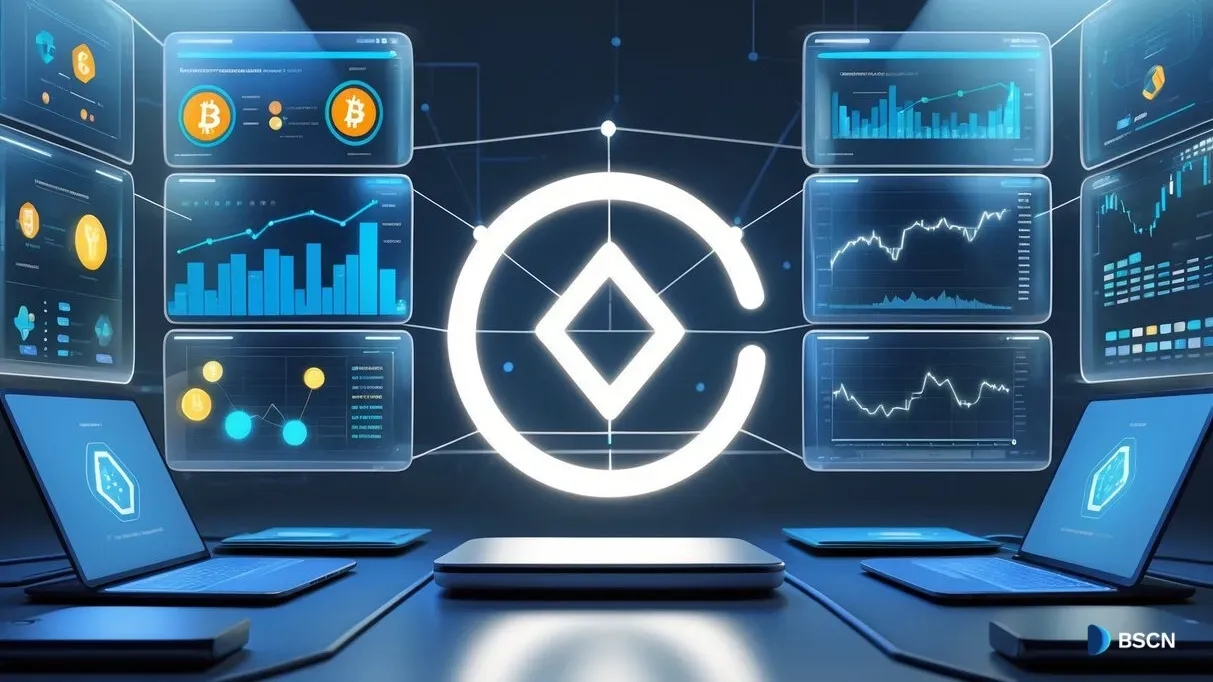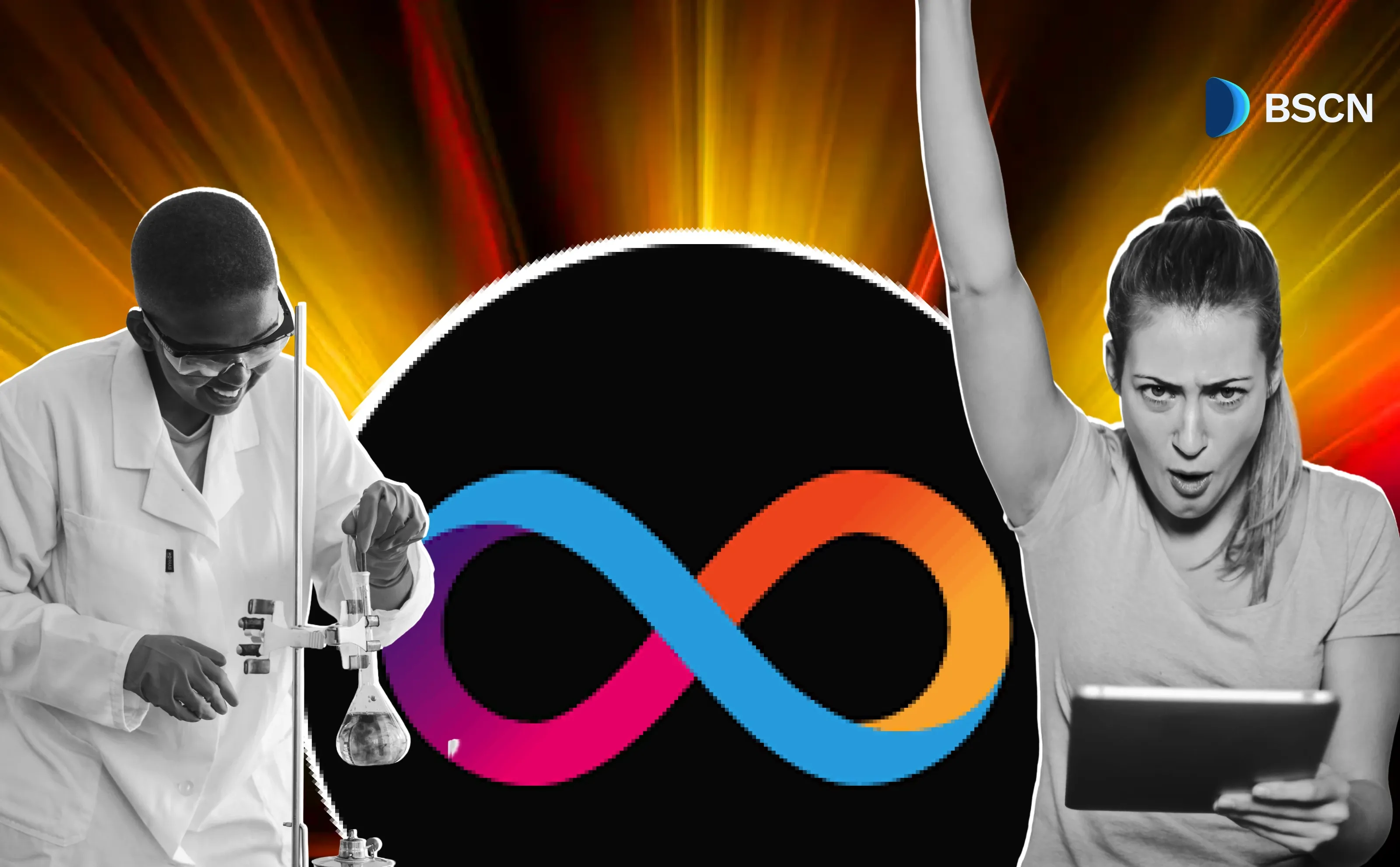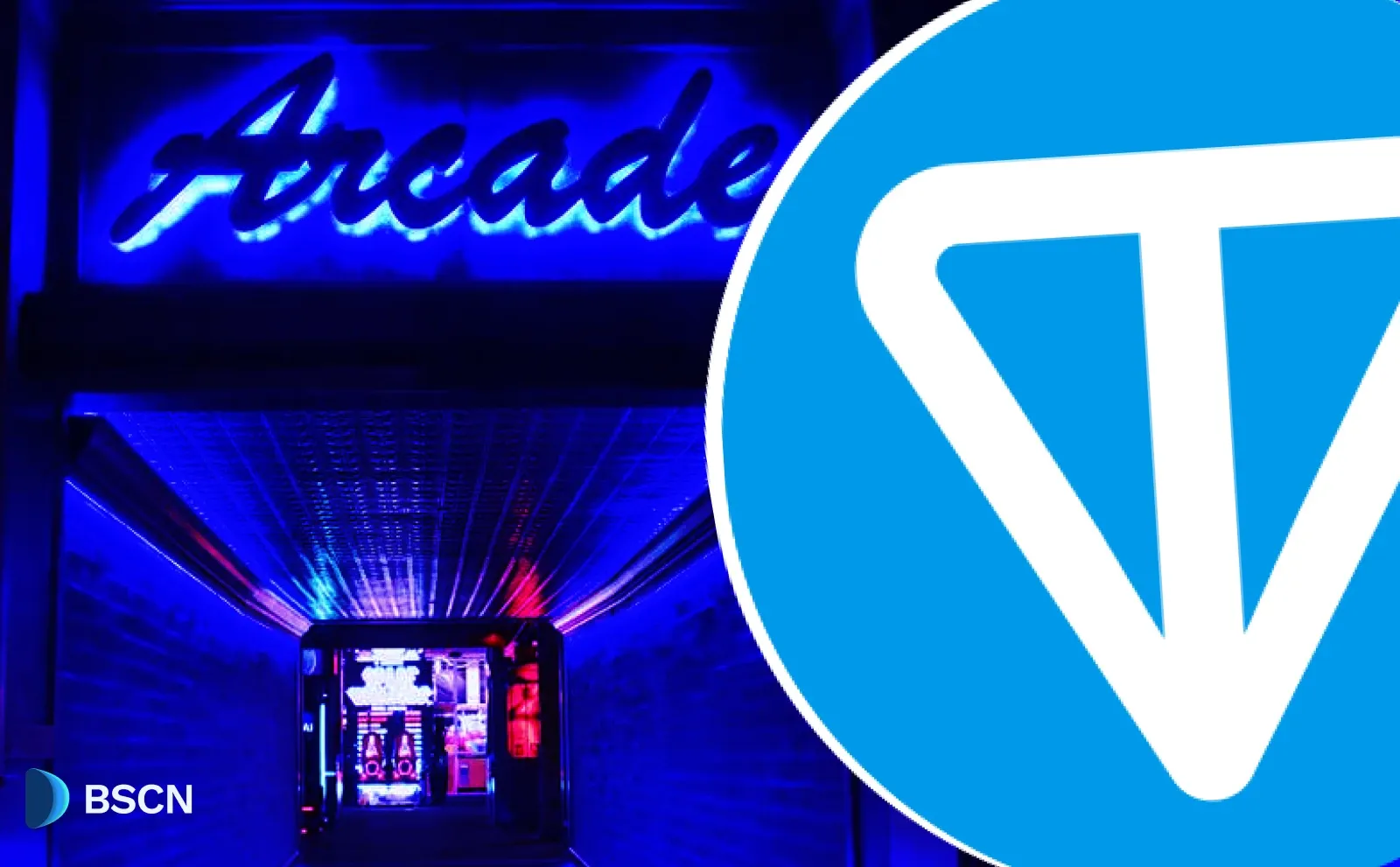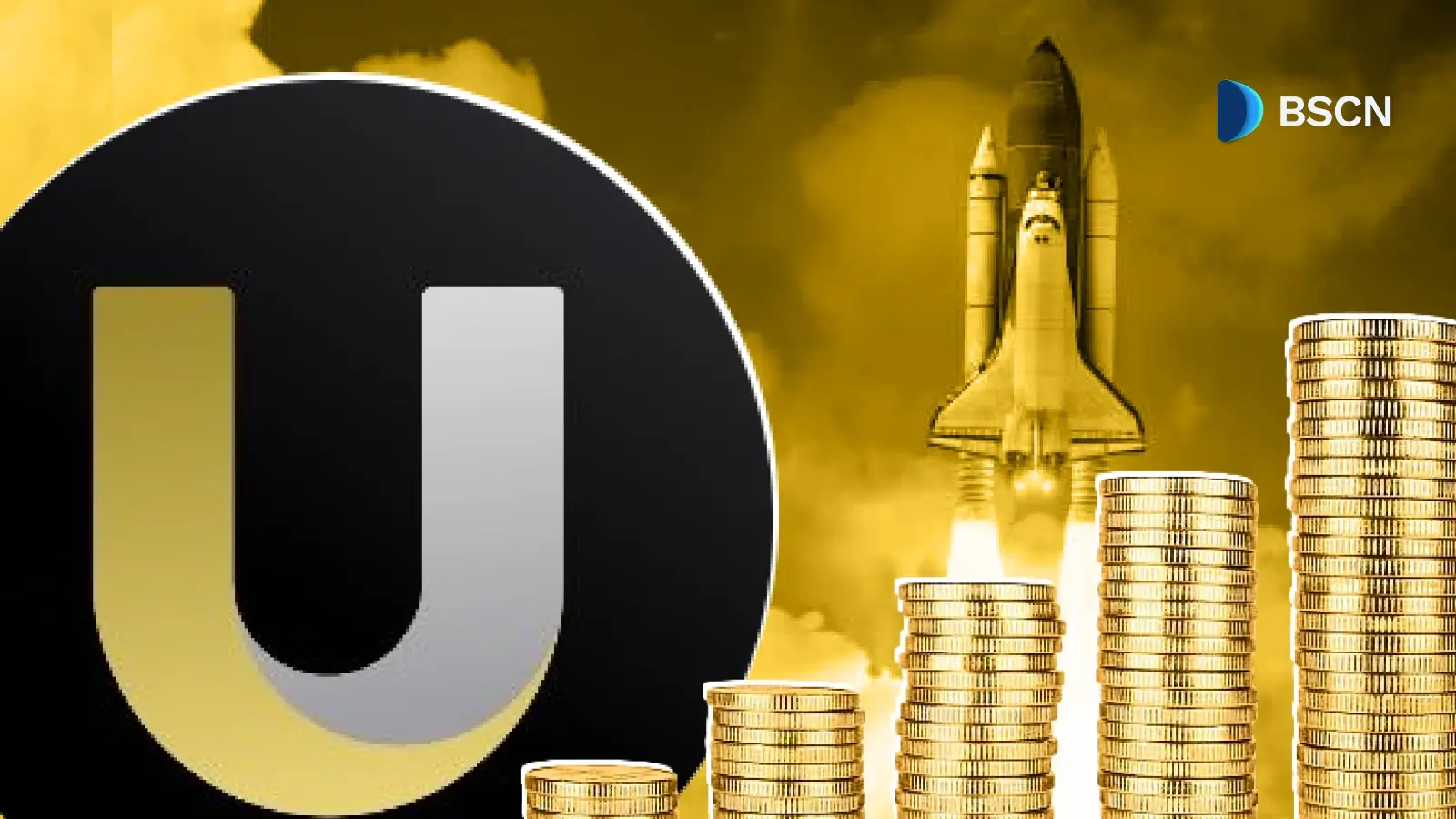Deepdive
(Advertisement)
Canton Coin $CC Explained: Introducing Cantonomics

Canton Coin ($CC) is the utility token for Canton Network, featuring burn-mint equilibrium for supply adjustment and participant rewards.
UC Hope
November 11, 2025
(Advertisement)
Table of Contents
Canton Coin, trading under the ticker $CC, serves as the native utility token for the Canton Network, a public Layer-1 blockchain designed for institutional finance.
Launched in July 2024 without pre-mines or special allocations, $CC rewards participants based on contributions to the network's Global Synchronizer, a decentralized system that coordinates private transactions across tokenized real-world assets.
In this article, we examine the $CC token, including its role in fee payments, network incentives, and participant rewards. Central to this is the Cantonomics framework, the tokenomics model that employs a burn-mint equilibrium to adjust supply based on network activity, with specifics on minting schedules, burning processes, and evolving reward distributions.
What Is the Canton Network?
The Canton Network functions as a blockchain platform tailored for financial institutions, focusing on privacy, regulatory compliance, and interoperability. Developed by Digital Asset Holdings since 2014, it enables the tokenization of assets such as bonds, treasuries, and collateral. Unlike general-purpose blockchains like Ethereum or Solana, Canton employs a privacy-by-default mechanism in which transactions are visible only to the parties involved, while still leveraging public decentralization for composability and atomic settlement.
The network's Global Synchronizer acts as the core infrastructure, ensuring simultaneous execution of transactions without intermediaries. This setup supports high-value operations, including repo trades and margin management, where data confidentiality is essential. Major institutions, including Goldman Sachs, Microsoft, BNP Paribas, Broadridge, Circle, and HSBC, have integrated with the platform, tokenizing over $6 trillion in real-world assets and processing up to $280 billion in daily repo transactions.
Funding for the project includes $135 million raised from investors such as a16z Crypto, Goldman Sachs, and DRW Venture Capital. A recent $540 million private placement, announced on November 6, 2025, bolsters the network's treasury strategy. These resources have facilitated expansions, such as integrations with Chainlink for data streams, proof-of-reserve attestations, and cross-chain functionality.
The History and Launch of Canton Coin
As stated earlier, work on the Canton Network began in 2014, rooted in Digital Asset's efforts to create privacy-focused blockchain technology for finance. A pilot phase in 2023 involved 155 participants from 45 institutions, testing more than 350 simulated transactions across tokenized assets, digital currencies, and securities lending.
The network went live in July 2024 with a fair launch model for $CC, distributing tokens solely through earned participation rather than pre-sales or allocations to founders, venture capitalists, or foundations. This approach contrasts with many blockchain projects that include initial distributions to early stakeholders.
As of writing, $CC is listed on top-tier exchanges, including Bybit, Gate.io, KuCoin, Kraken, and MEXC.
Understanding Cantonomics: Tokenomics of $CC
Cantonomics refers to the tokenomics framework of Canton Coin for the Canton Network's Global Synchronizer. This decentralised infrastructure connects the tokenization of real-world assets with on-chain capital markets, enabling asset mobility and composability akin to public blockchains while providing configurable privacy controls for institutional users.
We're flipping the tokenomics script.
— Canton Network (@CantonNetwork) November 10, 2025
Introducing Cantonomics👇🎥 pic.twitter.com/hlmSJSiay7
Unlike many tokens, it launched without a pre-mine, pre-sale, or allocations to founders, venture capitalists, or foundations, with all circulating tokens earned via network participation. Further, the CC supply is unlimited like Ethereum (ETH) or Solana (SOL), but fairly stable in practice. According to the protocol’s explainer, there’s no hard cap on issuance. However, every transaction on Canton burns CC, offsetting new emissions.
Key Functions of Canton Coin: The token performs several roles in the ecosystem:
- It is used for fee payments related to traffic on the Global Synchronizer.
- It incentivizes the network by rewarding participants who contribute value, including application providers and users.
- Application providers can choose to set their service fees in Canton Coin.
- Additionally, rewards and fees are publicly visible, offering transparency into network and application usage.
Fair Launch Model Based on Earned Value: Canton Coin's distribution uses a fair launch model in which tokens are earned through participation rather than pre-allocated. This approach aligns token ownership with network value creation via three principles:
- No pre-mine or pre-sale, avoiding the initial token creation or sales common in other projects.
- No special allocation to the Global Synchronizer Foundation.
- No preferential distributions to venture capital firms or early investors.
How the Tokenomics Work: A Self-Regulating Ecosystem: Canton Coin implements a burn-and-mint equilibrium mechanism to create a self-regulating system.
- Burning removes tokens from circulation through network usage fees.
- Minting generates new tokens as rewards based on participant activity, occurring every 10 minutes.
- The equilibrium targets an annual issuance and burning of approximately 2.5 billion coins, supporting price stability and tying value to the network's actual utility.
- Fees on the synchronizer are denominated in U.S. dollars, with the token price determined by market conditions.
How Rewards Work in Cantonomics
The reward structure in Cantonomics evolves to prioritize utility providers as the network matures. Initially, from July to December 2024, emphasis fell on infrastructure, with super validators receiving about 80% of rewards. By 2025, allocations shifted, increasing shares for applications and users.
Currently, the distribution allocates roughly 48% to super validators, 20% to validators, and 32% to application providers. From January 2026 to mid-2029, application providers will receive 62% of the pool, equating to around 516 million $CC monthly, while super validators drop to 20%. Overall, the model directs about 35% to infrastructure, 50% to application builders, and 15% to users.
Participants fall into three categories:
Super validators, numbering 26 to 32 institutions such as BitGo and Chainlink, secure the network using a proof-of-stake-honesty consensus. They initially receive the largest rewards but see their rewards decline over time.
Validators, with over 597 to 600 active nodes, include application users who run their own nodes. They earn proof-of-life rewards for maintaining liveness and connectivity, transaction rewards via partial fee rebates, and application rewards in the form of shares. Validators only process transactions they are involved in, supporting the network's privacy features.
Application providers deploy smart contracts and tokenized real-world assets. Their rewards scale with transaction volume, calculated as the app's monthly transactions divided by total network transactions, multiplied by the monthly app rewards pool and the on-chain conversion rate.
Upcoming Milestones and Outlook
The January 1, 2026, halving marks a significant adjustment, halving block issuance and redirecting rewards toward validators and applications. By mid-2026, the network anticipates reaching burn-mint equilibrium, stabilizing supply as burns match mints.
A further halving in 2029 will continue this trend, pushing annual inflation below 0.1%. Expansions include the Fusion upgrade in the first quarter of 2026 to improve latency, alongside integrations with Zerohash and a $500 million token treasury fund for application development.
Conclusion
Canton Coin operates as a utility token within the Canton Network. The cantonomics framework rewards super validators, validators, and application providers based on contributions, with halvings set to reduce inflation over time.
For those monitoring blockchain developments in finance, $CC illustrates a model prioritizing earned distribution and privacy, warranting attention for its alignment with regulatory needs. This approach underscores the token's role in facilitating secure, compliant asset mobility without relying on speculative elements.
Sources:
DRW Private Placement to establish Canton Coin Treasury: https://www.bloomberg.com/news/articles/2025-11-03/drw-leads-540-million-private-placement-in-digital-asset-firm
Canton $135M Raise: https://thedefiant.io/news/blockchains/digital-asset-raises-135-million-to-expand-institutional-canton-blockchain-10b52bac
What is Canton Coin: https://www.canton.network/blog/canton-coin-rewarding-utility
Read Next...
Frequently Asked Questions
What is Canton Coin $CC?
Canton Coin $CC is the native utility token of the Canton Network, used for fee payments, rewards, and optional application fees in a system focused on tokenized real-world assets with privacy controls.
What is Cantonomics?
Cantonomics refers to the tokenomics of $CC, featuring a burn-mint equilibrium where fees burn tokens and rewards mint new ones, aiming for an annual balance of 2.5 billion tokens to reflect network demand.
How does the burn-and-mint equilibrium work in Canton Coin's tokenomics?
The mechanism involves burning tokens through network usage fees to remove them from circulation and minting new tokens as rewards every 10 minutes based on participant activity, targeting an annual balance of approximately 2.5 billion coins issued and burned to maintain price stability aligned with network utility.
Disclaimer
Disclaimer: The views expressed in this article do not necessarily represent the views of BSCN. The information provided in this article is for educational and entertainment purposes only and should not be construed as investment advice, or advice of any kind. BSCN assumes no responsibility for any investment decisions made based on the information provided in this article. If you believe that the article should be amended, please reach out to the BSCN team by emailing [email protected].
Author
 UC Hope
UC HopeUC holds a bachelor’s degree in Physics and has been a crypto researcher since 2020. UC was a professional writer before entering the cryptocurrency industry, but was drawn to blockchain technology by its high potential. UC has written for the likes of Cryptopolitan, as well as BSCN. He has a wide area of expertise, covering centralized and decentralized finance, as well as altcoins.
(Advertisement)
Latest News
(Advertisement)
Crypto Project & Token Reviews
Project & Token Reviews
Comprehensive reviews of crypto's most interesting projects and assets
Learn about the hottest projects & tokens



